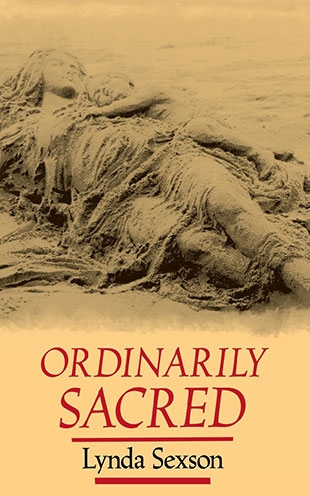"Reality can be discovered only by reading it," observes Lynda Sexson. "Most of humanity has at some time or another deciphered the texts of animal footprints, the sound of water, the lines in the palms of their hands, the constellations, the arrangement of stones. Whatever we perceive religiously we 'read': that is we interpret — we find meaning in relation to ourselves. The external is internalized."
In some primitive societies, no word existed for religion because all of life was viewed as sacred. In the West, the tradition of dividing the world into separate and unequal realms of the sacred and the profane has resulted in a disenchantment with the ordinary. It has led to a rigid and literalistic valuation of certain texts and a diminishment of the sacred potential of the spontaneous. And it has left millions of people starving for manna in the wilderness of contemporary culture.
Sexson offers an immensely exciting and creative alternative to this demented dualism. With commendable élan and erudition the professor of religious studies at Montana University sets out to illuminate the spiritual adventure of our time. Through the use of imagination, metaphor, and personal symbol making, "we can discover or recognize the sacred within the secular, or the divine in the ordinary."
In eight dazzling chapters, Sexson shows us how to make the most of "the imaginal reality that gives depth and integrity to our lives." She reveals how we locate spiritual meaning in a box underneath a bed, a cow's bone, a postcard, anecdotes about family, the stories we tell about our lives, a Christmas play fabricated by kids, weird dreams, a small girl's drawing, and the jokes we tell.
The author's unique storytelling ability, along with superb illustrative material gleaned from a wide variety of spiritual traditions, adds luster to her contention that "improvising may be the religious ritual and thought of the contemporary world." She finds sacred texts all around her; they expand her appreciation for the people, the places, and the events of her life.
She writes about the important role memory plays in keeping mind, body, and soul together. She treasures the links between art and religion as they make the ordinary special, exercise the imagination, and elicit interpretation. Women, fools, and children have proven to be connoisseurs of the commonplace as well as disturbers of the peace. The author salutes their special talents for searching out the sacred.
In an impressive chapter on dreams, Sexson offers an historical survey of their role and importance in various religious traditions. She believes they are helpful in opening up religious consciousness. "They do not tell truths, or explain the world, or make us better people: they play upon themes that make us human."
Ordinarily Sacred, originally released in 1982, speaks directly and eloquently to the widespread yearning of many sensitive people today to find within the precincts of their everyday lives a sense of the sacred. Sexson sallies forth not into a dreary universe split apart, but into a pluriverse of her own imaginative making where there are multiple meanings to be harvested. She ends the book where she began, celebrating the improvisational quality of our spiritual lives: "We must fabricate, make up our sacred stories as we go along." Yes, and the ordinary world gives us ample material to work with — texts, stories, memories, myths, images, dreams, and dramas beyond our wildest imaginings!
